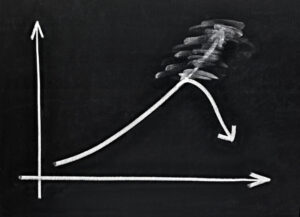By Dale Chu
 On the heels of some particularly depressing test results from Texas, last week saw the release of another state’s spring assessment scores where the picture was no less grim. Results from Indiana revealed steep declines, highlighting the uneven toll of the pandemic that adversely affected low-income students and families in particular. Although the rough news from Texas and Indiana was anything but unexpected, the abysmal numbers underscore the years-long task ahead of schools as they begin the long process of education recovery.
On the heels of some particularly depressing test results from Texas, last week saw the release of another state’s spring assessment scores where the picture was no less grim. Results from Indiana revealed steep declines, highlighting the uneven toll of the pandemic that adversely affected low-income students and families in particular. Although the rough news from Texas and Indiana was anything but unexpected, the abysmal numbers underscore the years-long task ahead of schools as they begin the long process of education recovery.
Sadly, these two reports are likely just the tip of the iceberg in a long string of bleak test score results to come. In fact, what’s bad for Texas and Indiana is likely even worse for other states as the school closures for Texans and Hoosiers were relatively short-lived.
Yet as dismaying as all of this news may be, both Texas and Indiana deserve credit for their commitment to state testing. This year, 85 percent of eligible students participated in the 3-8 STAAR assessments in Texas and 97 percent of students sat for the 3-8 ILEARN assessments in Indiana. In both cases, state leaders presciently recognized the importance of data to accelerate learning.
Texas Education Commissioner Mike Morath put it best:
The data may be disheartening, but with it, our teachers and school leaders are building action plans to support students in the new school year. Policymakers are using it to direct resources where they are needed most. And parents can log into TexasAssessment.gov to understand how well each of their children learned this year’s material, and how to support the academic growth of their children moving forward. Armed with the best information, working closely together, and with significant new supports from the Texas Legislature, we will provide stronger academic growth for students than ever before.
What’s more, Hoosiers are using the spring testing data to do an academic impact study. Initial findings show, among other things, that students experienced larger drops in math than in reading—an outcome consistent with national trends. More results from the study will be available later this summer.
All told, there’s not much to cheer about, but it’s hard to overstate how much worse things might be without the honest appraisal made possible by these annual exams. It raises the question of how we’ll really know how students have fared in states that took testing far less seriously, and as a result will have significantly lower participation rates.
